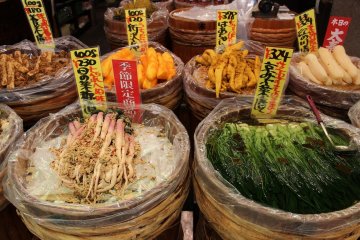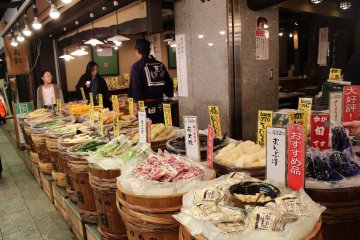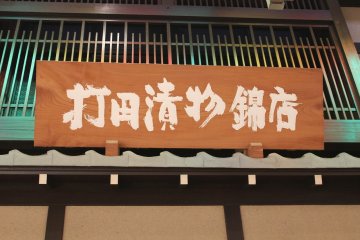The history of Kyoto Pickles is the history of Kyoto cuisine itself. With more than a thousand years of history, Kyoto has been the center of Japanese food culture since ancient times. Its food culture was refined by noblemen and the members of the royal family and brought to perfection as Kyoto cuisine over many centuries. Even now it still has a big influence on traditional cuisine throughout the whole country. Because of Kyoto's distance to the sea and slower transport a thousand years ago, it was very hard to get fresh seafood in the past. So the development of vegetarian cuisine and the farming of indigenous vegetables became the foundation of Kyoto cuisine, aided by the work of the thousands of shrines and temples in the area. However, there was a time when some of the Kyoto style vegetables were on the verge of extinction, because of changing consumer tastes for Western vegetables. These days Kyoto vegetables, which still have their unique characteristics, are not only endorsed as Kyoto’s cuisine but also by chefs of Italian and French cuisine all over the country.
There are too many Kyoto style vegetables to mention. The most famous ones are Seigoin turnip, Kamo eggplant, Katsura gourd, Kujou onion and Kyoto bamboo shoots. Today there are 41 different varieties of designated Kyoto vegetables. These days Kyoto pickled vegetables are indispensable for a meal. Using the raw materials of the four seasons like vegetable blossoms and bamboo shoots of spring, eggplants of summer, turnips of autumn and daikon of winter, they are made with a variety of methods, like rice bran pickles, salt pickles, malted rice pickles and sake pickles. Though there are many pickle shops in Kyoto's historic Nishiki markets, there are also as many methods to make red shiso salt pickles. When tasting the pickles, I am surprised by its characteristic flavors.
The Uchida pickle shop was established in 1940 in Shimabara, which had been a red light district since the days of Hideyoshi and Ieyasu. There are so many pickles on display it is hard to decide what to buy. That is why I limit myself to tasting the pickles. So before you go to Nishiki market, wash your hands. The best and fairest way to taste is to carry a folded tissue in my hand. The customers here are greeted warmly by the shop assistants. Remember, just because you have eaten some samples, does not mean you have to buy anything. It is already a big win for the shop as well as for the customers if they decide to taste their Kyoto style pickles, even if you are not buying anything. That is why I want to study Kyoto style pickles even more.
When you buy the pickles, they package them in small bags. It is easy as there is no smell or liquid leaking from the small packages. As I do not want the pickles to go bad, I want to buy them as close to the end of my journey as possible to keep them fresh. When I return home, I would enjoy some Kyoto style pickles with an evening drink in the quiet of my home, while recalling the carefree and friendly nature of Kyoto. This is a special moment.











